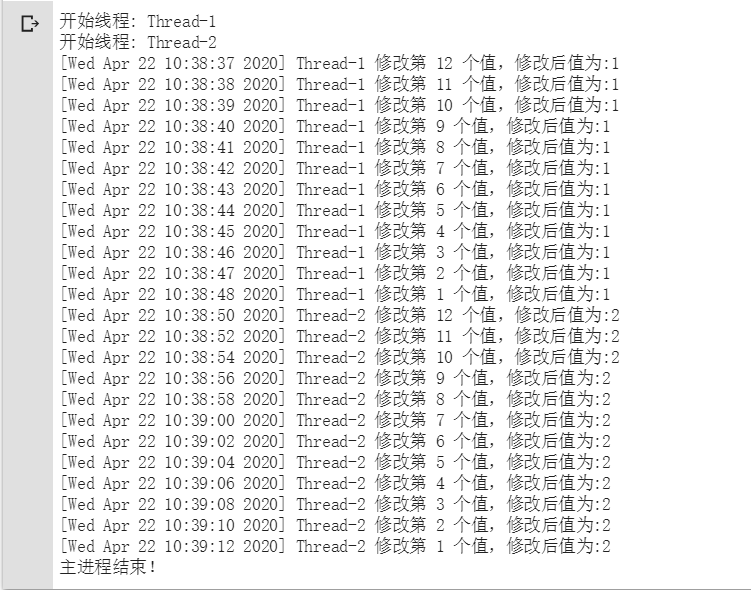多线程有点类似于多个程序同时运行。
其有以下优点:
- 使用线程可以把占据长时间的程序中的任务放到后台去处理。
- 程序的运行速度可能加快。
- 在一些等待的任务实现上如用户输入、文件读写和网络收发数据等,线程就比较有用了。在这种情况下我们可以释放一些珍贵的资源如内存占用等等。
下面是学习的代码。一些关键的点在注释里标出:
import threading import time list = [0,0,0,0,0,0,0,0,0,0,0,0] class myThread(threading.Thread): def __init__(self,threadId,name,counter): threading.Thread.__init__(self) self.threadId = threadId self.name = name self.counter = counter def run(self): print ("开始线程:",self.name) # 获得锁,成功获得锁定后返回 True # 可选的timeout参数不填时将一直阻塞直到获得锁定 # 否则超时后将返回 False threadLock.acquire() print_time(self.name,self.counter,list.__len__()) # 释放锁 threadLock.release() def __del__(self): print (self.name,"线程结束!") def print_time(threadName,delay,counter): while counter: time.sleep(delay) list[counter-1] += 1 print ("[%s] %s 修改第 %d 个值,修改后值为:%d" % (time.ctime(time.time()),threadName,counter,list[counter-1])) counter -= 1 threadLock = threading.Lock() threads = [] # 创建新线程 thread1 = myThread(1,"Thread-1",1) thread2 = myThread(2,"Thread-2",2) # 开启新线程 thread1.start() thread2.start() # 添加线程到线程列表 threads.append(thread1) threads.append(thread2) # 等待所有线程完成 for t in threads: t.join() print ("主进程结束!")
运行结果如下:

参考网站:菜鸟教程 https://www.runoob.com/python/python-multithreading.html 一个很好计算机技术的基础网站,涉及的范围很广。